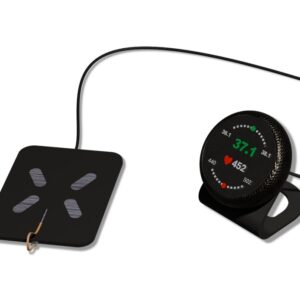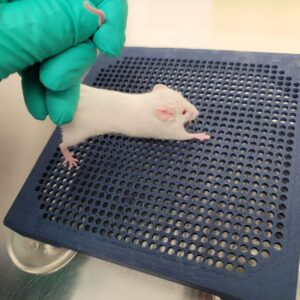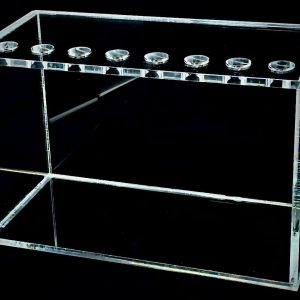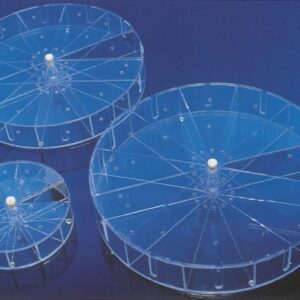Mickey’s Space Helmet is the first and only device on the market developed for researchers to perform oral procedures (cell inoculation, saliva collection, endoscopy, infection, etc) on mice while they are under isoflurane gas anesthesia. Typical gas anesthesia nose cones cover the mouth and much of the head preventing access to the oral cavity and pharynx. Our design creates a large window (15.75 x 16 mm) to allow maximum access for oral manipulations, taking advantage of the fact that mice are inherent nose breathers. This device immobilizes the animal’s head and upper body, freeing up your hands to solely perform the procedure. Provided silicone o-rings are attached to built-in “hooks” and are used to keep the mouth open via the mandibular and maxillary incisors (see images above). Note that o-rings can also be used to restrain the tongue. There are ten hooks for o-ring attachment that are available around the window to accommodate different size mice (15-64g tested) with a range of mouth sizes. The center hooks on either side of the window can be used to further restrain the body of the mouse for procedures that cause significant movement. The included adapter fits standard anesthesia lines and was designed so that lines can be easily moved. In addition, anesthesia lines are connected away from the technician so that the mouse mouth is closest to the technician, which is especially convenient when working in a biosafety cabinet, for example.
Andrea Bilger, Renee E. King, Josh P. Schroeder, Jared T. Piette, Louis A. Hinshaw, Andrew D. Kurth, Ronnie W. AlRamahi, Matthew V. Barthel, Ella T. Ward-Shaw, Darya Buehler, Kristyn S. Masters, Susan L. Thibeault and Paul F. Lambert. A Mouse Model of Oropharyngeal Papillomavirus-Induced Neoplasia Using Novel Tools for Infection and Nasal Anesthesia. Viruses 2020, 12(4), 450; https://doi.org/10.3390/v12040450
USD $308




